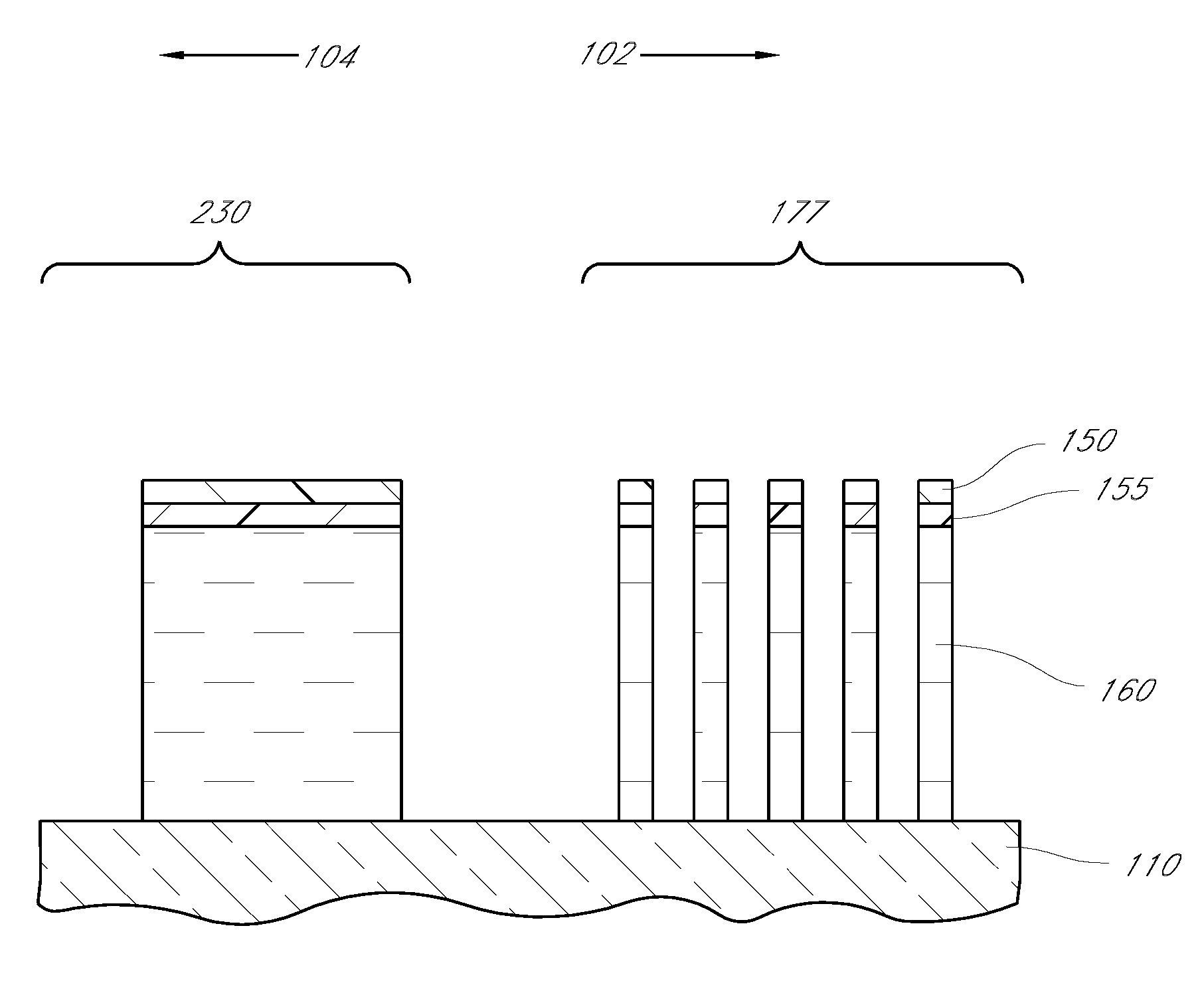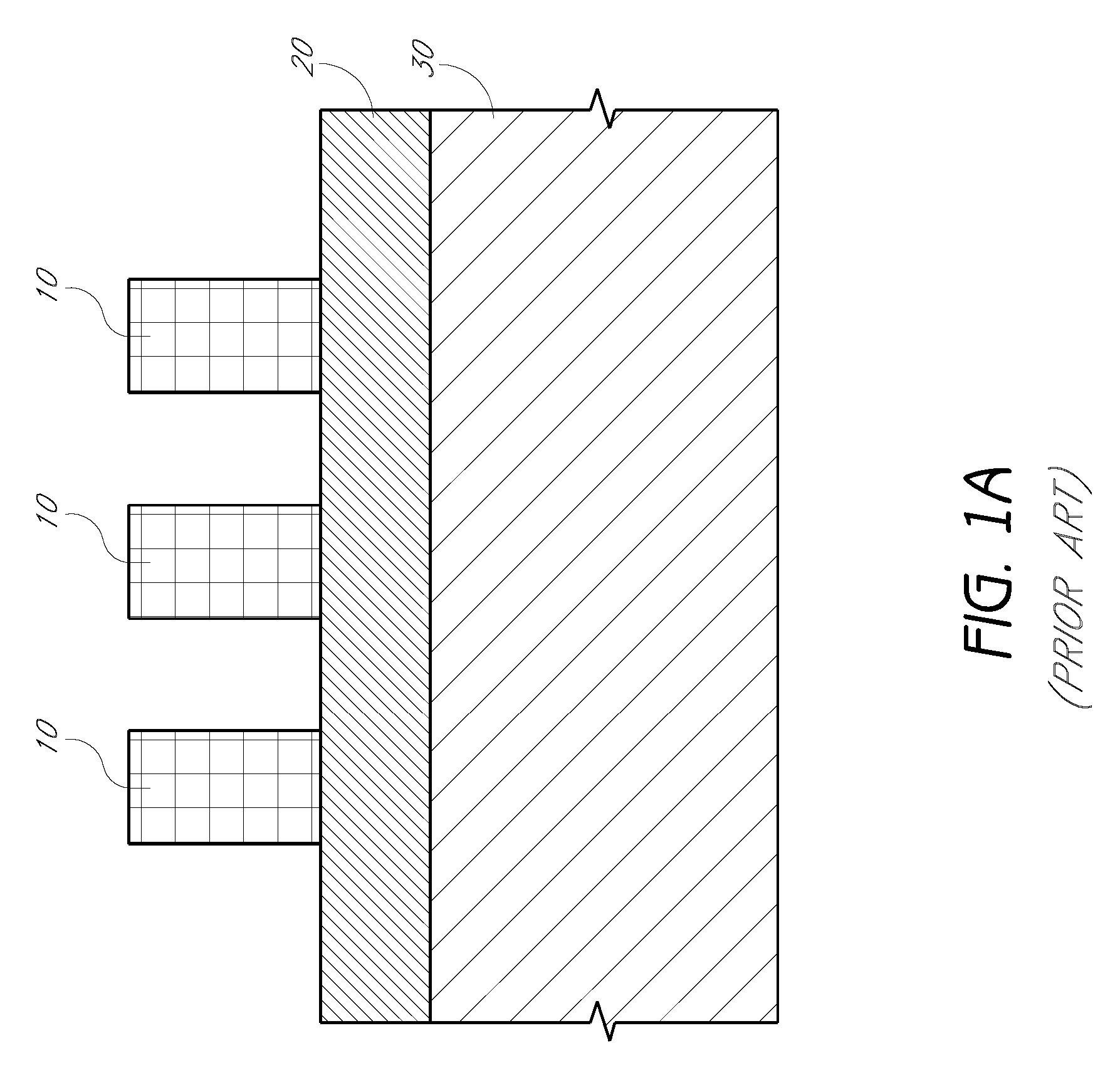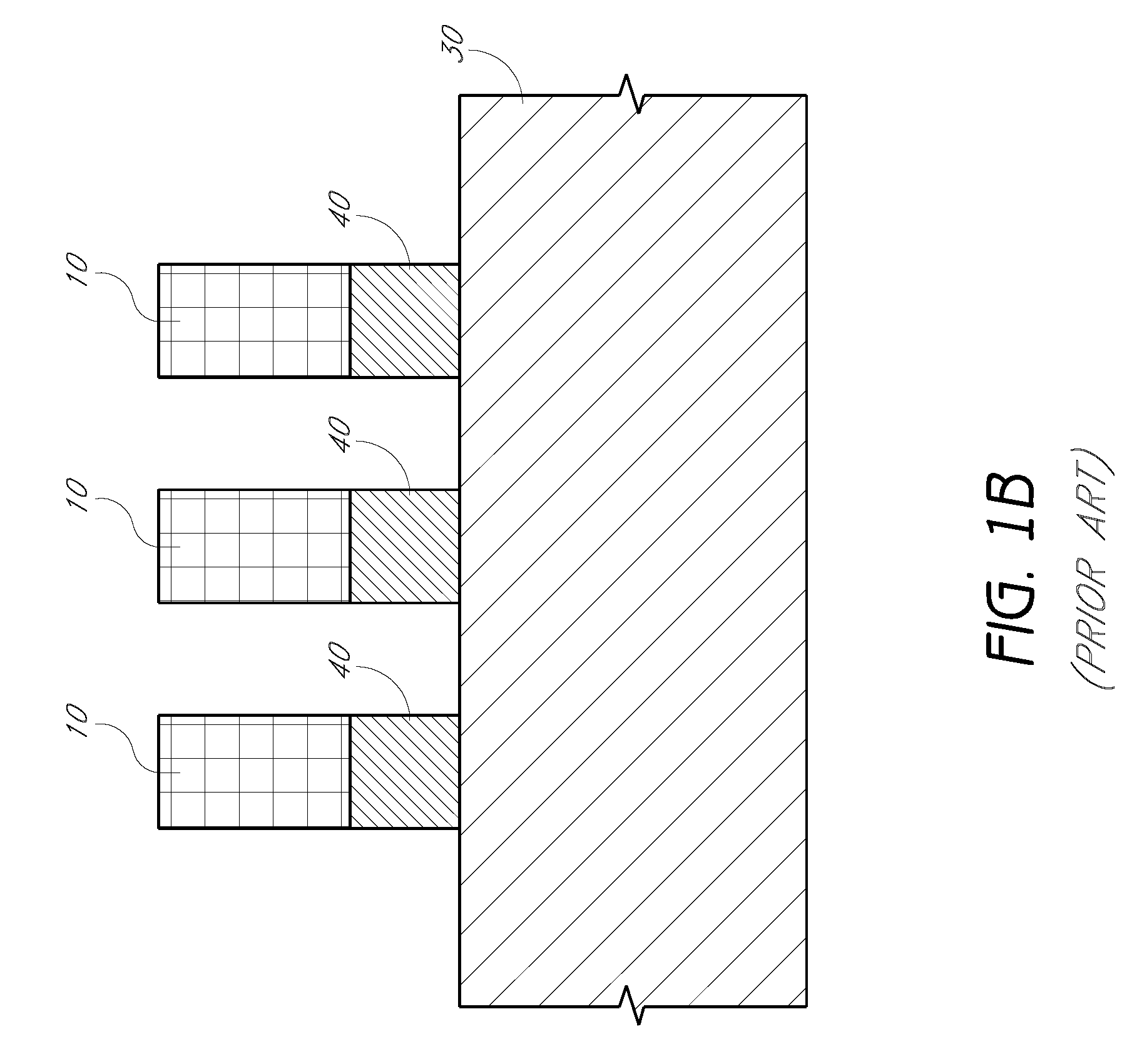Pitch reduced patterns relative to photolithography features
a technology of photolithography and features, applied in the field of masking techniques, can solve the problems of reducing the pitch of a photolithographic technique, limiting the ability of photolithography to continue to reduce the size of features, etc., to achieve the effect of reducing the number of features, reducing the difficulty of defining features, and reducing the pitch of photolithography
- Summary
- Abstract
- Description
- Claims
- Application Information
AI Technical Summary
Benefits of technology
Problems solved by technology
Method used
Image
Examples
Embodiment Construction
[0043] In addition to problems with forming differently sized features, it has been found that pitch doubling techniques can encounter difficulty in transferring spacer patterns to a substrate. In common methods of transferring patterns, both the spacers and the underlying substrate are exposed to an etchant, which preferentially etches away the substrate material. The etchants, however, can also wear away the spacers, albeit at a slower rate. Thus, over the course of transferring a pattern to an underlying material, the etchant can wear away the spacers before the pattern transfer is complete. These difficulties are exacerbated by the trend towards decreasing feature size, which, for example, increasingly leads to the need to form trenches which have increasingly higher depth to width ratios. Thus, in conjunction with difficulties in producing structures having different feature sizes, pattern transfer limitations make the application of pitch multiplication principles to integrate...
PUM
 Login to View More
Login to View More Abstract
Description
Claims
Application Information
 Login to View More
Login to View More - R&D
- Intellectual Property
- Life Sciences
- Materials
- Tech Scout
- Unparalleled Data Quality
- Higher Quality Content
- 60% Fewer Hallucinations
Browse by: Latest US Patents, China's latest patents, Technical Efficacy Thesaurus, Application Domain, Technology Topic, Popular Technical Reports.
© 2025 PatSnap. All rights reserved.Legal|Privacy policy|Modern Slavery Act Transparency Statement|Sitemap|About US| Contact US: help@patsnap.com



